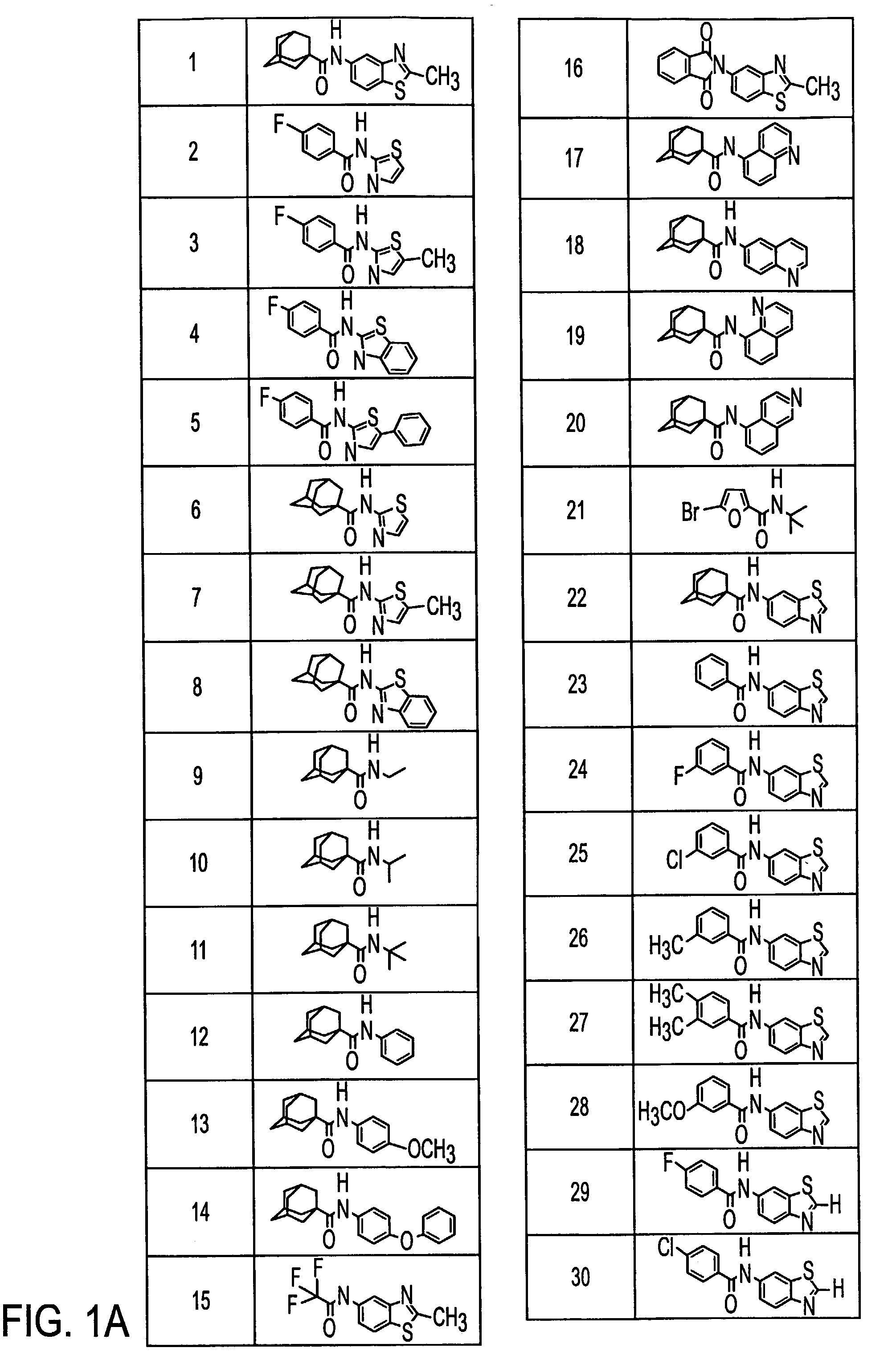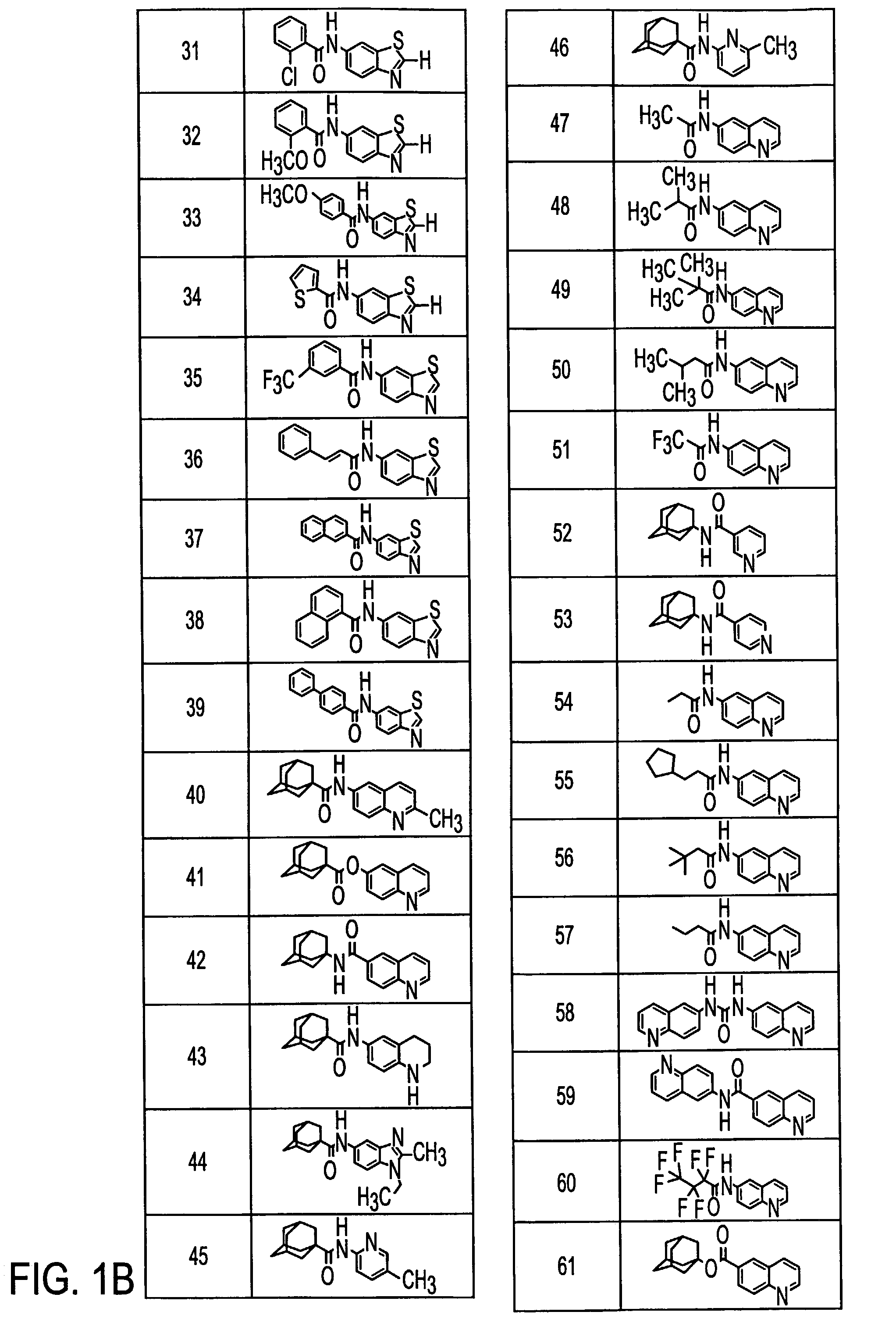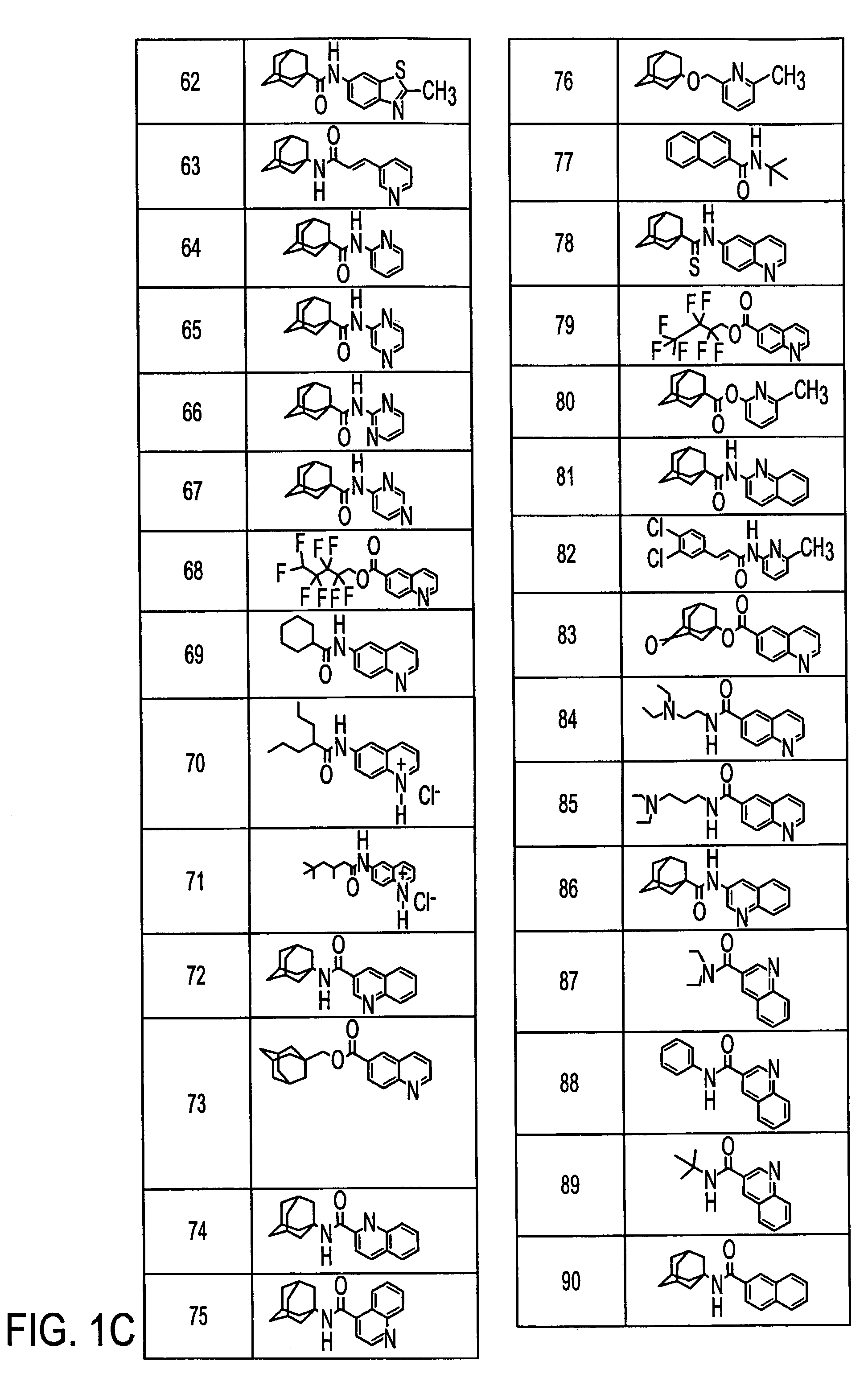Metabotropic glutamate receptor antagonists and their use for treating central nervous system diseases
a technology antagonist, which is applied in the direction of heterocyclic compound active ingredients, biocide, organic chemistry, etc., can solve the problems of affecting the development of metabotropic glutamate receptor subtype-selective compounds, and affecting the elucidation of physiological phenomena, so as to inhibit neuronal damage
- Summary
- Abstract
- Description
- Claims
- Application Information
AI Technical Summary
Benefits of technology
Problems solved by technology
Method used
Image
Examples
example 1
Preparation of N-[6-(2-Methylquinolyl)]-1-adamantanecarboxamide (40)
[0107]2-Methyl-6-aminoquinoline
[0108]A mixture of 2-methyl-6-nitroquinoline (1.00 g, 5.31 mmol) and Pearlman's catalyst [palladium dihydroxide on activated charcoal (˜20% palladium); 0.10 g] in ethyl acetate (40 mL) was stirred under hydrogen gas (1 atm) at 60° C. for 1.5 h. The reaction mixture was filtered and the filtrate was rotary evaporated. This provided 0.81. g (96%) of 2-methyl-6-aminoquinoline as a yellow solid.
[0109]N-[6-(2-Methylquinolyl)]-1-adamantanecarboxamide (40)
[0110]1-Adamantanecarbonyl chloride (1.02 g, 5.13 mmol) in pyridine (2 mL) was added to a solution of 2-methyl-6-aminoquinoline (0.81 g, 5.1 mmol) in pyridine (8 mL). The reaction was stirred for 17 h. To the stirring reaction mixture was added water (100 mL) which caused the product to precipitate. This precipitate was filtered and then washed with water (3×25 mL) and diethyl ether (3×25 mL). This provided 1.07 g (65%) of (40) as a cream-co...
example 2
Preparation of 6-Quinolyl 1-adamantanecarboxylate (41)
[0126]1-Adamantanecarbonyl chloride (1.37 g, 6.90 mmol) in pyridine (5 mL) was added to a solution of 6-hydroxyquinoline (1.00 g, 6.89 mmol) in pyridine (15 mL). The reaction was stirred for 16 h. To the stirring reaction mixture was added water (200 mL) which caused the product to precipitate. This precipitate was filtered, washed with water (3×50 mL), and dried under high vacuum. This provided 1.56 g (73.7%) of (41) as a light-brown powder:
[0127]rt=11.41 min.; m / z (rel. int.) 307 (M+, 2), 136 (11), 135 (100), 116 (11), 107 (7), 93 (14), 92 (2), 91 (8), 89 (7), 79 (16), 77 (8).
example 3
Preparation of 1-Adamantyl 6-quinolinecarboxylate (61)
[0128]6-Quinolinecarbonyl Chloride Hydrochloride
[0129]6-Quinolinecarboxylic acid was refluxed in thionyl chloride for 30 min. The excess thionyl chloride was then removed by rotary evaporation (90° C.) to provide 6-quinolinecarbonyl chloride hydrochloride.
[0130]1-Adamantyl 6-quinolinecarboxylate (61)
[0131]6-Quinolinecarbonyl chloride hydrochloride (0.76 g, 3.3 mmol) in pyridine (2 mL) was added to a solution of 1-adamantanol (0.60 g, 3.9 mmol) in pyridine (8 mL). The reaction was stirred at 70° C. for 16 h. To the stirring reaction mixture was added water (100 mL) which caused the product to precipitate. This precipitate was filtered and then washed with water (3×25 mL). The filter cake was dissolved in ethanol (20 mL) and water was then added to the cloud point (16 mL). The crystallizing solution was allowed to stand for 15 h. Filtering and drying under high vacuum for 7 h provided 0.32 g (26%) of (61) as light brown needle-like...
PUM
| Property | Measurement | Unit |
|---|---|---|
| dissociation constant | aaaaa | aaaaa |
| flow rate | aaaaa | aaaaa |
| pH | aaaaa | aaaaa |
Abstract
Description
Claims
Application Information
 Login to View More
Login to View More - R&D
- Intellectual Property
- Life Sciences
- Materials
- Tech Scout
- Unparalleled Data Quality
- Higher Quality Content
- 60% Fewer Hallucinations
Browse by: Latest US Patents, China's latest patents, Technical Efficacy Thesaurus, Application Domain, Technology Topic, Popular Technical Reports.
© 2025 PatSnap. All rights reserved.Legal|Privacy policy|Modern Slavery Act Transparency Statement|Sitemap|About US| Contact US: help@patsnap.com



